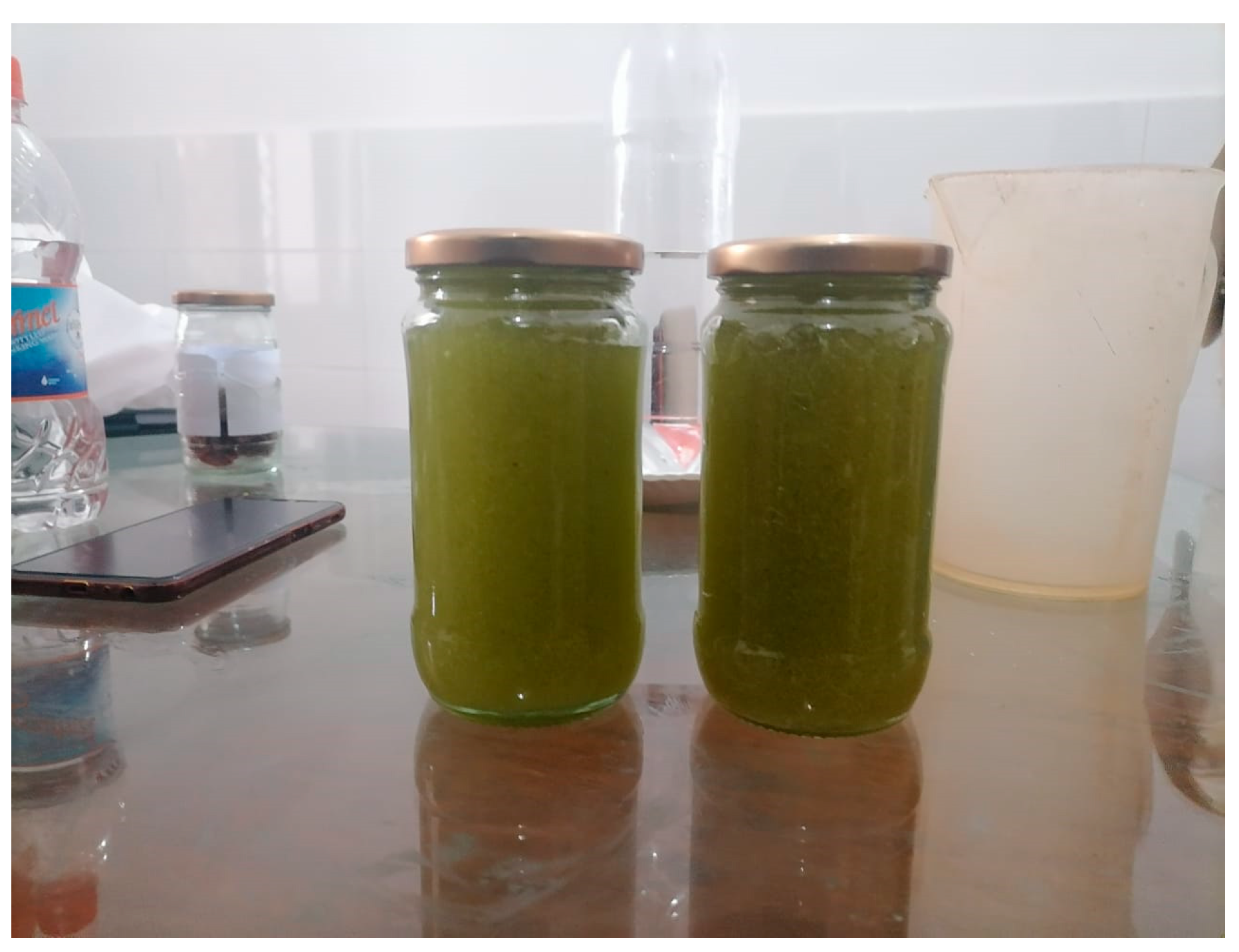Production and Acceptability of Jam Produced from Kiwi Fruit and Cucumber †
Abstract
:1. Introduction
2. Materials and Methods
2.1. Procurement of Raw Material
2.2. Preparation of Raw Material
2.3. Preparation of Jam
3. Results and Discussion
4. Sustainability Importance and Future Research Directions
Author Contributions
Funding
Institutional Review Board Statement
Informed Consent Statement
Data Availability Statement
Conflicts of Interest
References
- Feyishara, A.; Fatmata, F.J. Physicochemical, Rheological and Sensory Attributes of Honey Sweetened Jam Produced from Blends of Carrot and Cucumber. J. Food Stab. 2019, 2, 1–14. [Google Scholar] [CrossRef]
- Ogori, A.F.; Amove, J.; Evi-Parker, P.; Sardo, G.; Okpala, C.O.R.; Bono, G.; Korzeniowska, M. Functional and sensory properties of jam with different proportions of pineapple, cucumber, and Jatropha leaf. Foods Raw Mater. 2021, 9, 192–200. [Google Scholar] [CrossRef]
- Uthpala, T.G.G.; Marapana, R.A.U.J.; Lakmini, K.P.C.; Wettimuny, D.C. Nutritional Bioactive Compounds and Health Benefits of Fresh and Processed Cucumber (Cucumis Sativus L.). Sumerianz J. Biotechnol. 2020, 3, 75–82. [Google Scholar]
- Lan, T.; Geng, T.; Ju, Y.; Cheng, G.; Que, Z.; Sun, X. Nutritional properties and biological activities of kiwifruit. Food Nutr. Res. 2019, 1, 1–17. [Google Scholar]
- Ali, W.; Latif, A.; Mazahir, M.; Mehdi, A.; Bashir, S.; Asim, M. Quality evaluation of peach jam prepared by incorporation of Aloe vera gel. Pure Appl. Biol. 2021, 10, 935–944. [Google Scholar] [CrossRef]
- Rana, M.S.; Yeasmin, F.; Khan, M.J.; Riad, M.H. Evaluation of quality characteristics and storage stability of mixed fruit jam. Food Res. 2021, 5, 225–231. [Google Scholar] [CrossRef] [PubMed]

| Treatments | Cucumber Fruit Pulp % | Kiwi Fruit Pulp% |
|---|---|---|
| T0 | 100% | 0% |
| T1 | 50% | 50% |
| T2 | 30% | 70% |
| T3 | 70% | 30% |
Disclaimer/Publisher’s Note: The statements, opinions and data contained in all publications are solely those of the individual author(s) and contributor(s) and not of MDPI and/or the editor(s). MDPI and/or the editor(s) disclaim responsibility for any injury to people or property resulting from any ideas, methods, instructions or products referred to in the content. |
© 2023 by the authors. Licensee MDPI, Basel, Switzerland. This article is an open access article distributed under the terms and conditions of the Creative Commons Attribution (CC BY) license (https://creativecommons.org/licenses/by/4.0/).
Share and Cite
Hassan, A.; Khan, M.K.I.; Fordos, S.; Usman, A.; Arif, S.; Aslam, A. Production and Acceptability of Jam Produced from Kiwi Fruit and Cucumber. Biol. Life Sci. Forum 2023, 26, 118. https://doi.org/10.3390/Foods2023-15022
Hassan A, Khan MKI, Fordos S, Usman A, Arif S, Aslam A. Production and Acceptability of Jam Produced from Kiwi Fruit and Cucumber. Biology and Life Sciences Forum. 2023; 26(1):118. https://doi.org/10.3390/Foods2023-15022
Chicago/Turabian StyleHassan, Ali, Muhammad Kashif Iqbal Khan, Summaia Fordos, Ali Usman, Sharmeen Arif, and Abuzar Aslam. 2023. "Production and Acceptability of Jam Produced from Kiwi Fruit and Cucumber" Biology and Life Sciences Forum 26, no. 1: 118. https://doi.org/10.3390/Foods2023-15022
APA StyleHassan, A., Khan, M. K. I., Fordos, S., Usman, A., Arif, S., & Aslam, A. (2023). Production and Acceptability of Jam Produced from Kiwi Fruit and Cucumber. Biology and Life Sciences Forum, 26(1), 118. https://doi.org/10.3390/Foods2023-15022






